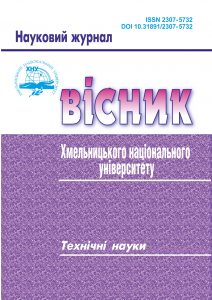OPTIMIZATION OF COMPACT LOG-PERIODIC DIPOLE ANTENNAS WITH EXTENDED LOW-FREQUENCY CHARACTERISTICS
DOI:
https://doi.org/10.31891/2307-5732-2023-329-6-238-242Keywords:
CST simulations, printed log-periodic dipole array antennas, UWB antennas, amplification, directional diagram, ultra-broadband communicationAbstract
With the rapid technological advancements over the last decade, there is an increased demand for new generation wireless devices and communication systems. This work provides an overview of various methods of miniaturization of printed log-periodic dipole antennas in order to reduce their size. First, the work involves the design of a standard printed log-periodic dipole antenna that operates over a wide frequency range from 0.7 GHz to 8 GHz and has an acceptable gain over most of its bandwidth. This antenna serves as a baseline model for further research and optimization. Furthermore, this paper introduces a novel approach to extending the low-frequency response of these antennas. The approach entails replacing the longest direct dipole with a triangular dipole structure and optimizing the dimensions of the four longest dipoles. The outcome is an enhanced antenna capable of operating within the 0.4 GHz to 8 GHz range, albeit with a minor reduction in gain at lower frequencies. The research on extending the low-frequency response of printed log-periodic dipole antennas holds promise for enhancing antenna systems' performance across various applications, including wireless communications, radar, and satellite communications. The findings of this study can serve as a foundation for further innovations and developments in the field of antenna technology, making a significant contribution to the advancement of modern wireless technologies. This work is particularly valuable for engineers and scientists working in the realm of antenna technology and wireless communications. It introduces a fresh perspective on enhancing the low-frequency performance of printed log-periodic dipole antennas, which may find applications in diverse radio communication systems, thus addressing the growing demand for compact yet efficient antenna solutions in the ever-evolving world of wireless technology.

